Drinking Water Protection
- Drinking Water Protection Home
- About Us
- A-Z Index of Contaminants in Water
- Community Public Water Supply
- Drinking Water Grants and Loans
- Drinking Water Institute
- Drinking Water in Schools and Child Cares
- Drinking Water Revolving Fund
- Laws and Rules
- Noncommunity Public Water Supply
- Source Water Protection
- Water Operator and Certification Training
- Drinking Water Protection Contacts
Related Topics
- Annual Reports
- Drinking Water Risk Communication Toolkit
- Drinking Water Protection External Resources
- Fact Sheets
- Forms
- Invisible Heroes Videos: Minnesota's Drinking Water Providers
- Noncom Notes Newsletter
- Sample Collection Procedures (videos, pictures, written instructions)
- Waterline Newsletter
Related Sites
- 10 States Standards
- Clean Water Fund
- Health Risk Assessment – Guidance Values and Standards for Water
- Minnesota Well Index
- Water and Health
- Wells and Borings
Environmental Health Division
Waterline: Fall 2021

Editor:
Stew Thornley
Subscribe to The Waterline newsletter. An e-mail notice is sent out each quarter when a new edition is posted to the web site.
On this page:
- Kinney Secession: Effective but No Longer Necessary
- Drinking Water Annual Report Covers Pandemic Responses by Utilities
- Hydration Stations a Hit in Schools
- WUTT Celebrates First Class
- PWS Profiles: Michael Bourland, Erin Culver, Andrew Karp, Samantha Miltz
- Don't Do This
- Is the Water Colder?
- In-Person Schools Returning
- Wastewater Beer?
- Duluth Communicates to Customers on Lead in Water
- Department of Natural Resources Issues Drought Guidance
- Deb Swackhamer Dies
- Words to Live By
- Past Waterlines Archived at wateroperator.org
- Reminder to All Water Operators
- Calendar
Kinney Secession: Effective but No Longer Necessary
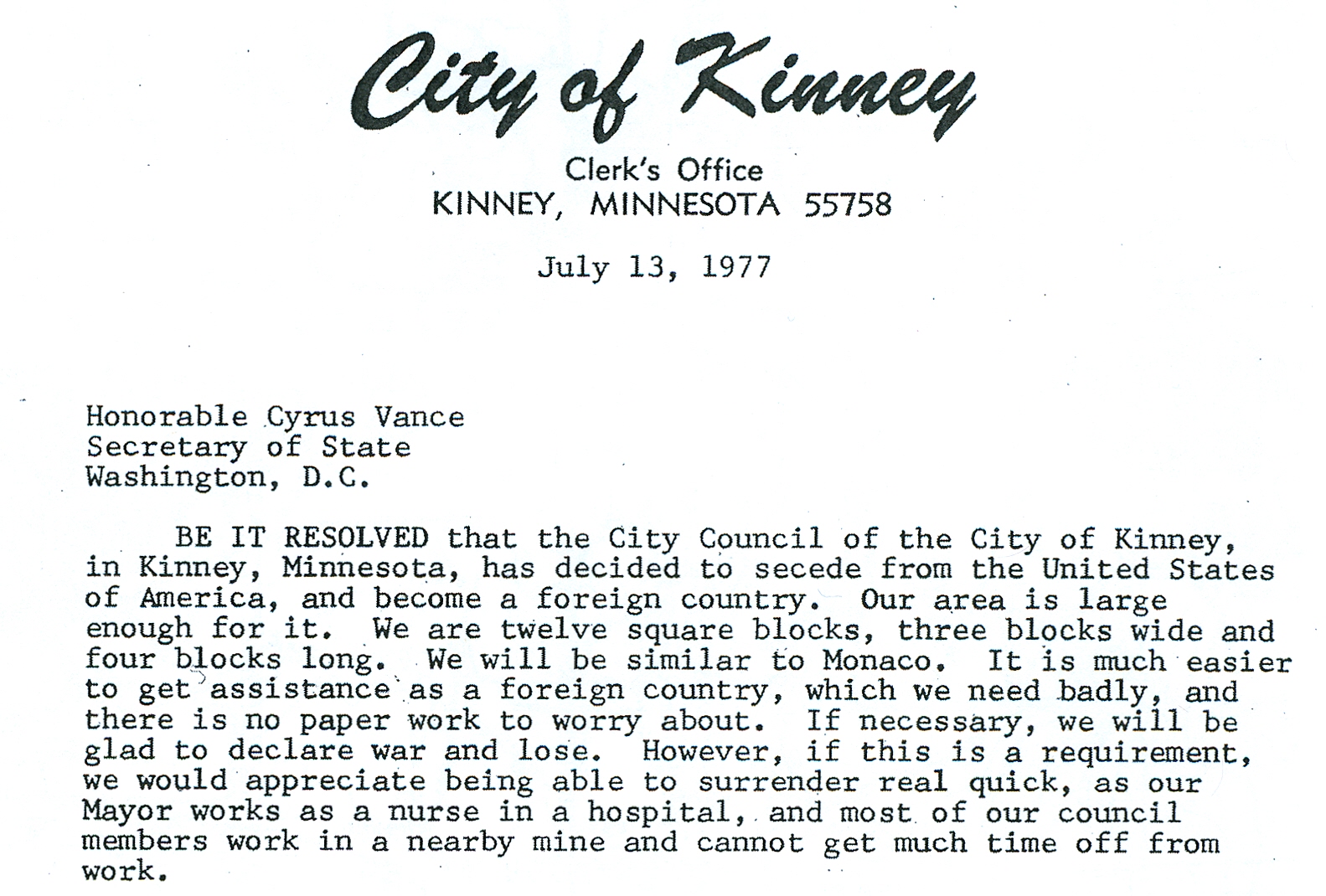
The 1996 amendments to the federal Safe Drinking Water Act (SDWA) created a revolving loan fund. Similar to one already in place for wastewater projects, the Drinking Water Revolving Fund (DWRF) provides below-market-rate loans to public water systems for capital improvements needed to achieve or maintain compliance with the SDWA. Since the inception of the DWRF, Minnesota has funded nearly 600 projects totaling more than $1 billion.
What was life like, especially for smaller communities, before DWRF? Cities had to get creative, and the saga of one Minnesota Iron Range town lives on nearly half-a-century later.
The Iron Range in Minnesota is associated with iron-ore mining districts in the northeast part of the state. The Vermilion Range wraps around the Ely area. The larger Mesabi (also spelled Mesaba and pronounced as such) Range—mostly to the southwest of the Vermilion—encompasses a region that includes Hibbing, Chisholm, Virginia, and Eveleth. Amid these cities have existed numerous “locations,” communities on the edge of an open mine pit that were established to provide residences for the workers and not meant to continue for longer than the mine was operational.
Early in the 20th century, a location emerged between Virginia and Chisholm, a mile north of what is now U. S. Hwy. 169. Known as Kinney (after O. D. Kinney, an early miner in the area), its population peaked at more than 1,200 and then declined; however, the city of Kinney lived on, even though its utilities weren’t intended to last for decades. A surge in residents—from 325 in 1970 to 600 by mid-decade with the expansion of a U. S. Steel mine—taxed its aging infrastructure.
Mary Anderson grew up in Kinney and, after excursions to other parts of the country, returned to her hometown and began operating a liquor store and bar with her dad in the 1940s. In the 1960s she became a nurse and worked at the hospital in nearby Virginia. She was also active in the Democratic-Farmer-Labor (DFL) party, an affiliate of the national Democratic party. The DFL at the time dominated the region, which has been historically aligned with organized labor. Paul Wellstone even kicked off the Iron Range portion of his 1990 U. S. Senate run at Mary’s Bar in Kinney and has called Anderson the “soul of the Iron Range.”
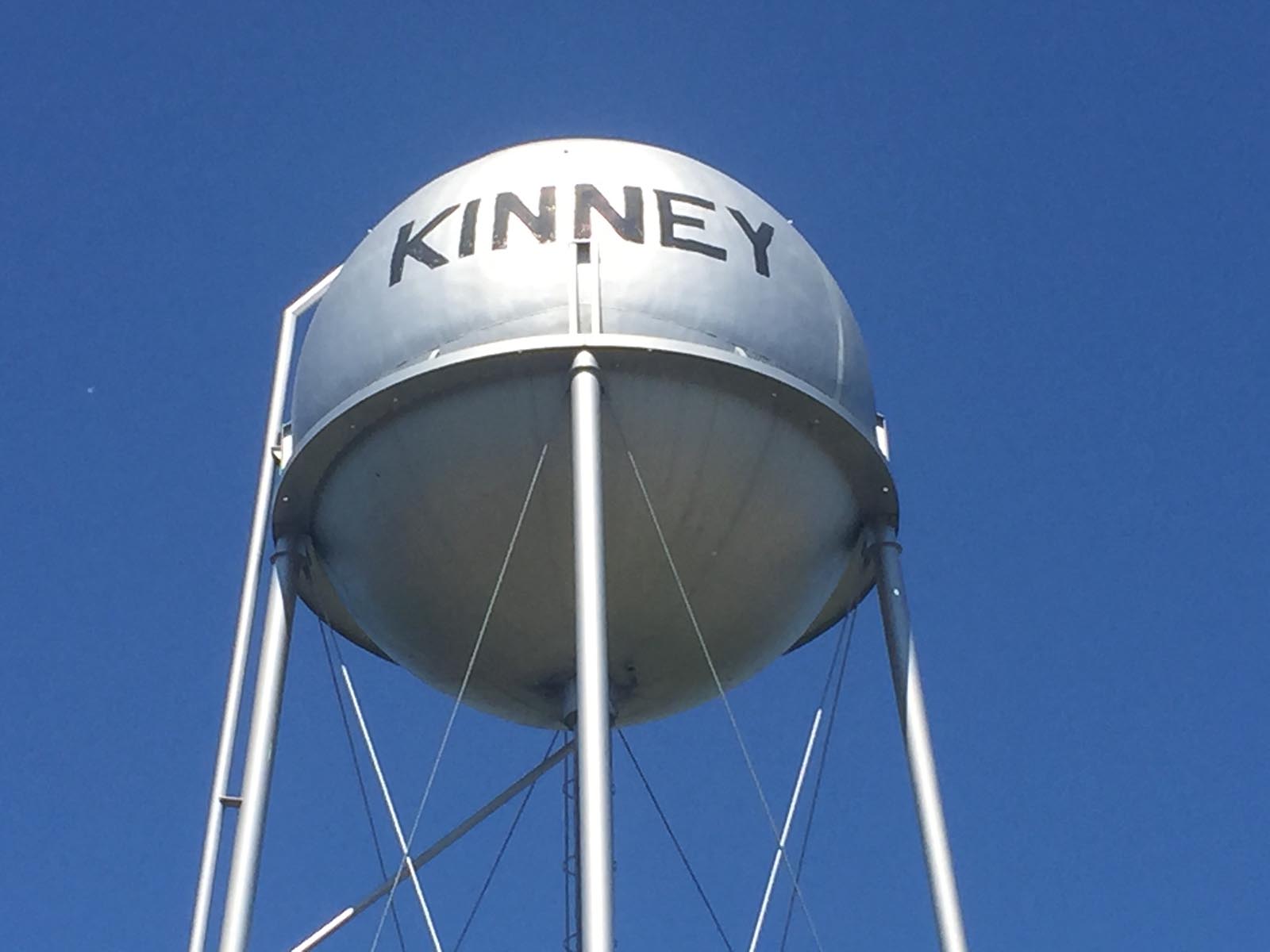
In 1973 Anderson took on another role: mayor of Kinney. Two years before she had run and narrowly lost to a man who then died in office. Anderson prevailed in a special election to fill the vacancy and was re-elected in 1975 with a pledge to get funding to improve the city’s water system. Beset with iron and manganese that fouled its aesthetic qualities, the water also had problems with built-up mineral deposits in the pipes. Anderson saw the effects when her family home, by this time a rental property, burned in 1974. Besides the issues with low pressure in the pipes, one of the fire hydrants didn’t work.
Anderson and the city council filed countless grant applications and searched for money, with little success. At a meeting on July 12, 1977, the group decided to follow on an idea that had come up in earlier brainstorming—secession. Village attorney Jim Randall was told to draft a letter to U. S. Secretary of State Cyrus Vance. The next day the city officials signed and sent the missive:
BE IT RESOLVED that the City Council of the City of Kinney, in Kinney, Minnesota, has decided to secede from the United States of America, and become a foreign country. Our area is large enough for it. We are twelve square blocks, three blocks wide and four blocks long. We will be similar to Monaco. It is much easier to get assistance as a foreign country, which we need badly, and there is no paper work to worry about. If necessary, we will be glad to declare war and lose. However, if this is a requirement, we would appreciate being able to surrender real quick, as our Mayor works as a nurse in a hospital, and most of our council members work in a nearby mine and cannot get much time off from work.
In addition to Anderson and Randall, the signatories were city clerk Margaret Medure and councilmembers Lloyd Linnell and Myron Holcomb.
After a month without a reply, Anderson sought help from Veda Ponikvar of the Chisholm Free Press. (Like Anderson, Ponikvar was well known on the Iron Range and later became a real-life character in W. P. Kinsella’s novel, Shoeless Joe; in the movie based on the book, Field of Dreams, Ponikvar was portrayed by Anne Seymour.) But even Ponikvar’s assistance had little effect.
Finally, in early 1978, the widespread publicity came. It started with Ginny Wennen of the Mesabi Daily News of Virginia hearing the secession story. Young and enterprising, Wennen saw the potential for a story that would at least create smiles among readers. It did much more. “Move Over Monaco, Here Comes Kinney” was the headline over Wennen’s February 5 front-page story, which went wherever a 1977 version of “viral” might be. David Brinkley mentioned Kinney on the NBC Nightly News two days later, and the story spiraled through other news outlets.
About the same time, the city’s squad car broke down. Out of desperation, Anderson contacted Jeno Paulucci, a native of the Mesabi Range and a tycoon in ventures ranging from pizzas to periodicals. A man who admired spunk and operated with flair, Paulucci donated a used Ford LTD emblazoned with a “Republic of Kinney” logo to replace the squad car, and he threw in a box of 10 cases of his pizza mix—all to grand publicity, of course.
Seeing a turn in the tide, the new republic embraced its independence. Kinney created a passport for its residents with a logo that contained the slogan, “File in Triplicate,” homage to the red tape they had unsuccessfully meandered through before. Wennen continued to write stories, as did others. Not everyone embraced the movement. From within the Iron Range itself and throughout the country, some blasted Kinney for its lack of self-sufficiency. (One critic suggested a literal blast with an anonymous letter indicating hope that the U. S. government would use Kinney “as a test site for one of their neutron bombs.”)
The detractors, however, were in the minority, and the overall reaction was positive. In March 1978, Hibbing-native and Minnesota governor Rudy Perpich became the first non-resident to receive a passport, and Kinney began selling them to outsiders as a fundraising effort. Others pitched in, designing a flag and donating a canoe so Kinney could have a Navy. 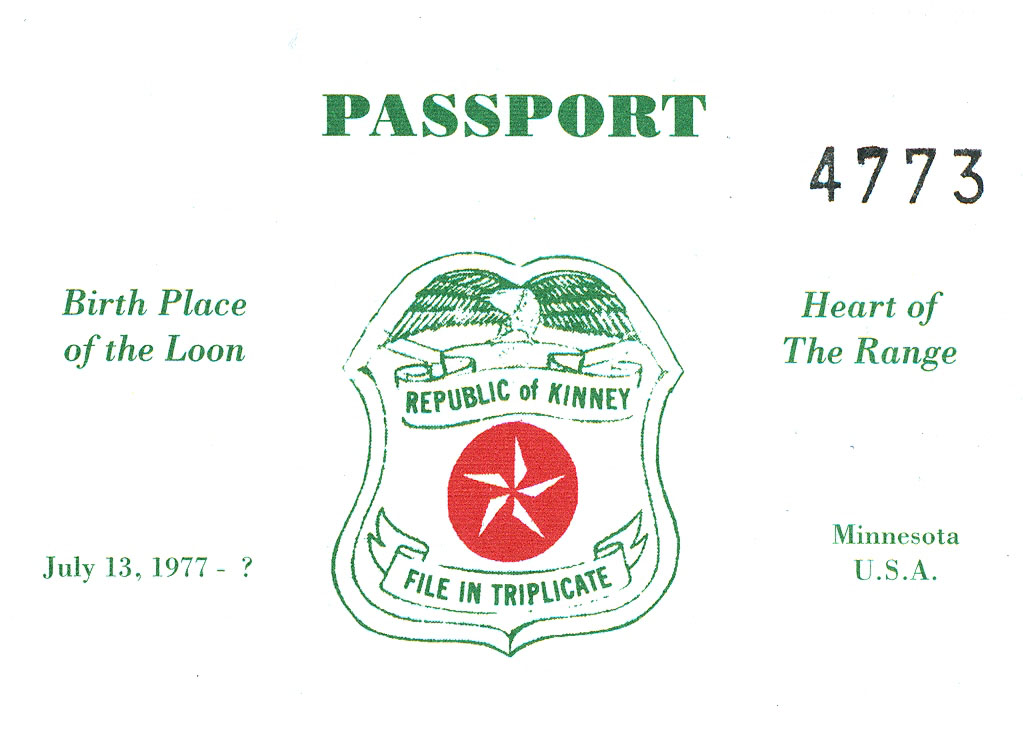
After conventional efforts produced little, Kinney’s innovative approach worked. “The publicity we generated had the desired effect,” said Randall. By the end of March 1978, Kinney received a grant of $60,000 from the Iron Range Resources and Rehabilitation Board (IRRRB), a state development agency designed to advance economic growth on the Iron Range. By the end of the year, the IRRRB added another $138,000, enough for Kinney to replace its water and sewer lines and drill a 450-foot-deep well.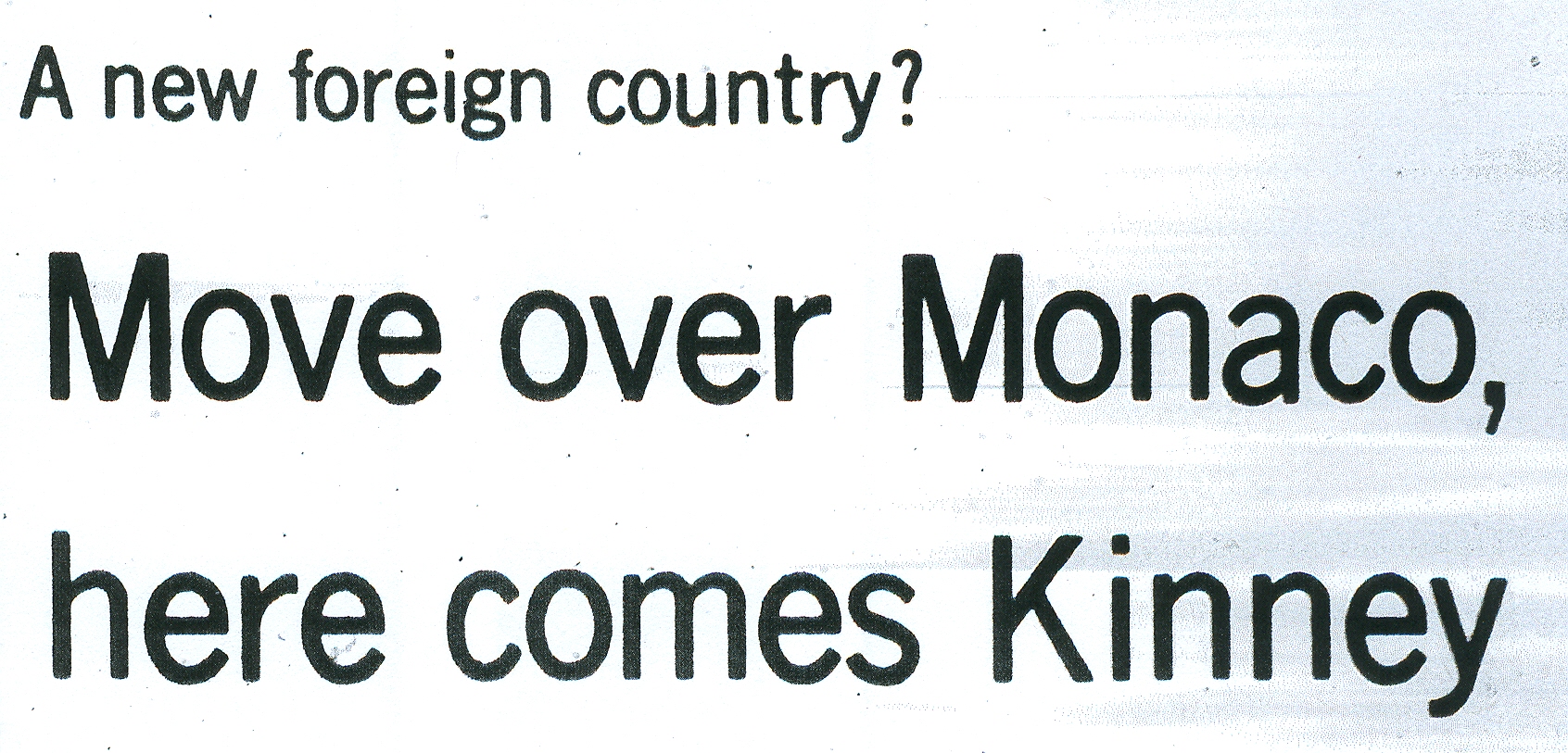
The headline in the February 5, 1978 Mesabi Daily News
Even with a functioning water system, Anderson’s bar and her apartment atop it burned down in 1995. The locals chipped in and quickly a pair of structures went up on the site, one for Anderson to live in and the other for the bar, which remained the unofficial headquarters of the Republic of Kinney. In 2002 Anderson wrapped up her tenure as mayor and also sold the bar to Larry Hauta, who grew up in the area. The Kinney offices, just across the street, have limited hours, so the bar (now Liquid Larry’s) is still the place to obtain a passport. Hauta maintains a record of all who buy one and continues the long tradition of screening non-residents with a “visual inspection and a handshake.”
By the early 1980s the water system had been fixed, but ongoing challenges remained, ones inherent to the Iron Range with its cyclical history of shutdowns and layoffs. Kinney carried on and, with Anderson as grand marshal, celebrated its 30 years of independence with a Secession Days Festival and a Republic of Kinney Day in July 2007. Anderson died three months later. Numerous political leaders, including Mark Dayton (between stints as a U. S. Senator and Minnesota Governor), attended.
Kinney’s population was 152 when Anderson died. It’s now under 150, and its future as a town is uncertain. But its legacy as a Republic lives on.
Footnote:
Secession was nothing new to Kinney in terms of innovative solutions. George Rekela, who grew up in Kinney, told of the time the city needed a night patrolman and was able to cheaply contract with the town’s Peeping Tom because, as Rekela said, “They figured he was already out there anyway. . . ”
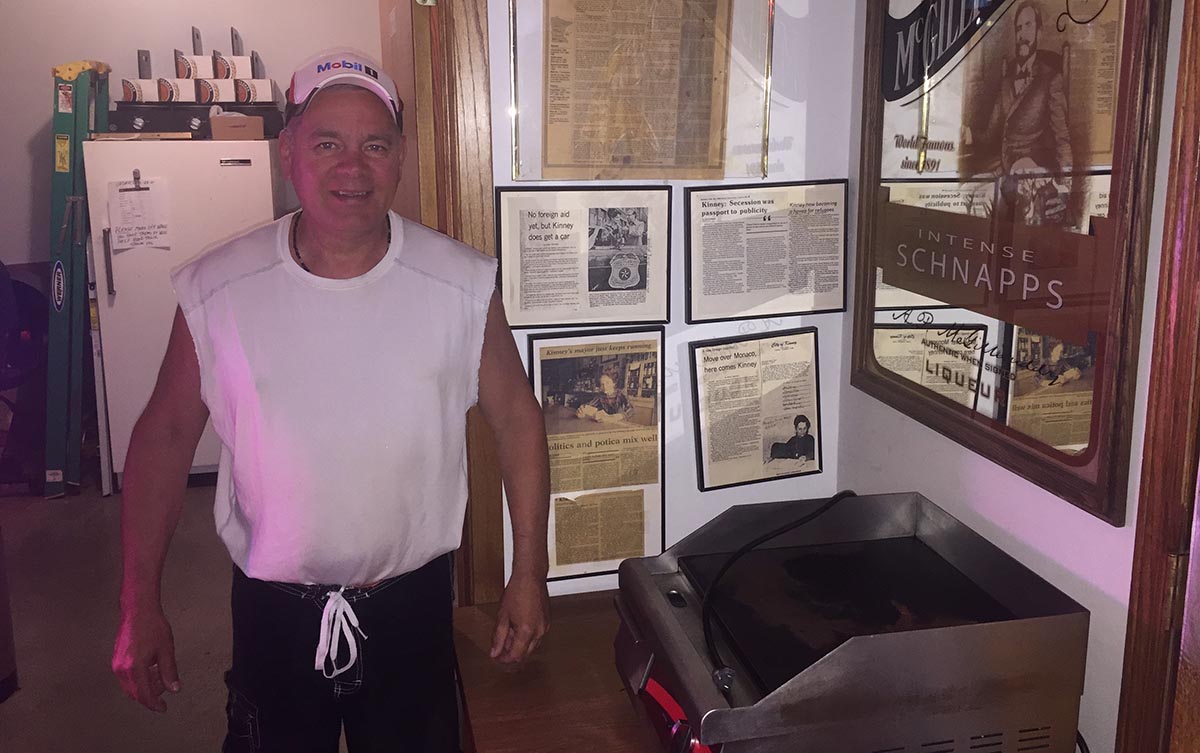 |
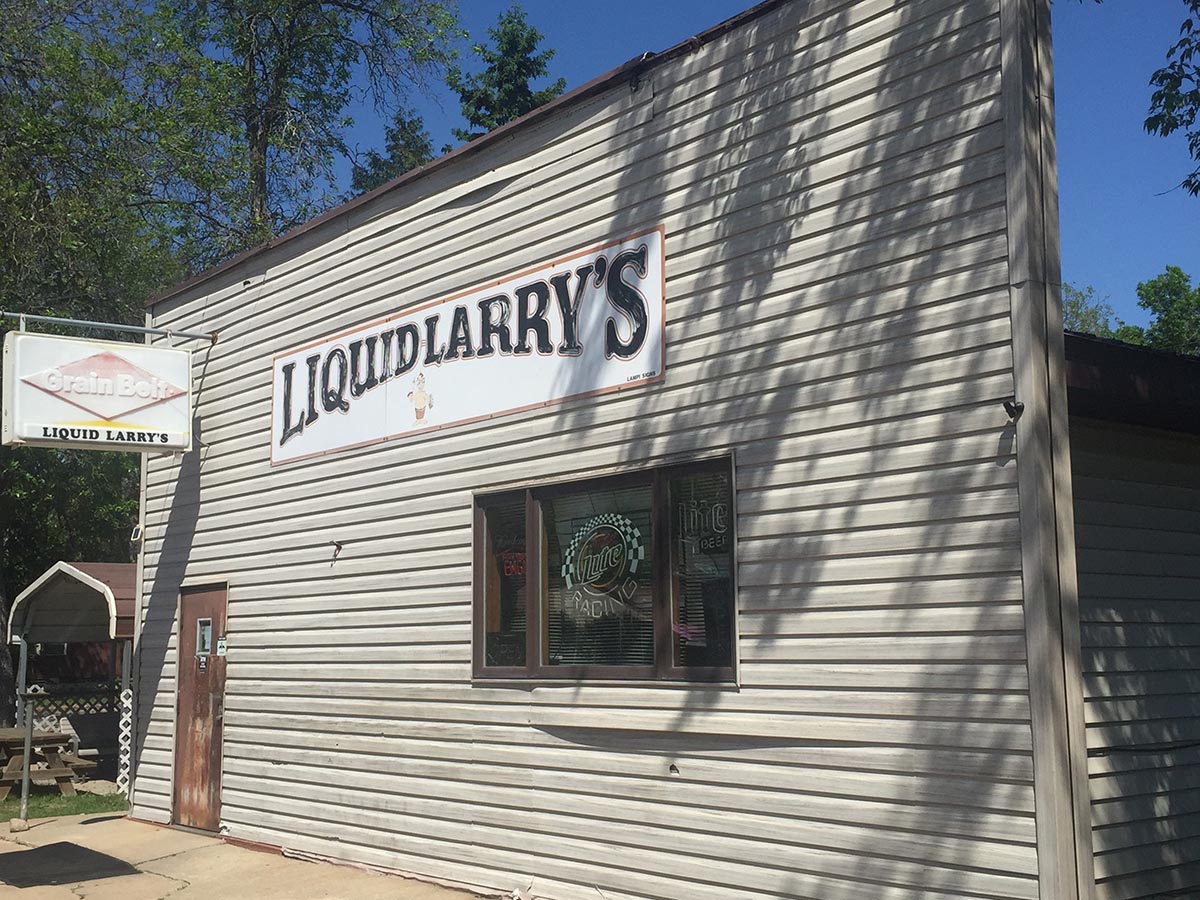 |
Liquid Larry Hauta keeps the secession spirit alive by selling Republic of Kinney passports and maintaining a display of its history. Liquid Larry’s still has the faded Grain Belt sign, which survived the 1995 fire and is a vestige of Mary’s Bar.
Needs Remain
While Kinney got the funding to fix its water system, infrastructure needs remain for public water suppliers across Minnesota and the country. Drinking water infrastructure includes everything from the water source to meters in people’s homes. It includes wells and well houses, pumps, treatment facilities, storage units, distribution pipes, power sources, and computer systems. Current infrastructure needs for Minnesota total nearly $1 billion, and the U. S. Environmental Protection Agency estimates that the state will have to invest approximately $7.5 billion over the next 20 years to upgrade community public water systems to comply with the Safe Drinking Water Act. More than half of the current financial need is for water systems serving fewer than 3,300 people.
As a result of the changes in legislation to two key grant programs in Minnesota in 2017, the Water Infrastructure Fund (WIF) and Point Source Implementation Grant (PSIG), the grant funding for drinking water projects has increased over the last several years. Funding totaled $17.5 million in fiscal year 2019. WIF provides grant funding based on an affordability threshold, allowing needed and costly drinking water infrastructure projects to be completed. PSIG is a grant program designed to help communities address limits placed on wastewater discharges and assist public water systems. Both of these programs, when linked to the Drinking Water Revolving Fund, have put many needed drinking water infrastructure projects in reach for communities across Minnesota.
In recent years, Kinney has also received a pair of Source Water Protection grants totaling nearly $11,000 from the Minnesota Department of Health (MDH).
Though available grant dollars increased over the last few years, grant dollars still do not cover total project costs, so systems have to find other funding mechanisms for projects, such as Drinking Water Revolving Fund loans as well as the U. S. Housing and Urban Development Small Cities Development Program and the Department of Agriculture Rural Development. Organizations such as MDH and the Minnesota Rural Water Association are assisting water systems with financial and asset management planning and working to coordinate funding programs to optimize the use of available funds.
Current programs and funding tools make it more likely that cities will receive the support they need to remain viable and maintain the economic development that depends on a safe and reliable source of water without having to declare war on the United States.
Go to top
Drinking Water Annual Report Covers Pandemic Responses by Utilities
The Minnesota Department of Health (MDH) has released its annual drinking water report, which it has issued since 1995 regarding the condition of drinking water in the state. In addition to a summary of monitoring results from 2020, this year’s report includes the challenges faced by utilities and regulators in continuing operations during a pandemic. “Through floods, tornadoes, and other natural disasters that shut down businesses and other operations, public water systems have been remarkably consistent in maintaining a safe supply of water for their customers. COVID-19 is a challenge like never before, but the drinking water profession continues to come through,” reads a section in the report’s introduction.
Many public water systems were ready to deal with the pandemic as a result of contingency plans already in place. Cross-training of employees was one way in which utilities prepared, making sure distribution crews and those at the treatment plant were sufficiently versed on one another’s job to be able to step in in case employees became sick.
“Providing safe drinking water to homes and businesses day in and day out doesn’t just happen on its own, but is the result of hard work and extensive partnerships,” MDH Commissioner Jan Malcolm said in a press release that accompanied the report. “As a result of these partnerships, even in times like COVID-19, we can still go to the kitchen sink and expect to have plenty of safe water.”
“Though the COVID-19 pandemic has necessitated changes in how we do our work, the drinking water program at MDH has sustained its work to keep drinking water safe for everyone, everywhere in Minnesota, in partnership with 6,724 public water systems across the state,” added Sandeep Burman, manager of MDH’s section of Drinking Water Protection.
The report is on-line (PDF):
Minnesota Annual Compliance Report for 2020
Go to top
Hydration Stations a Hit in Schools
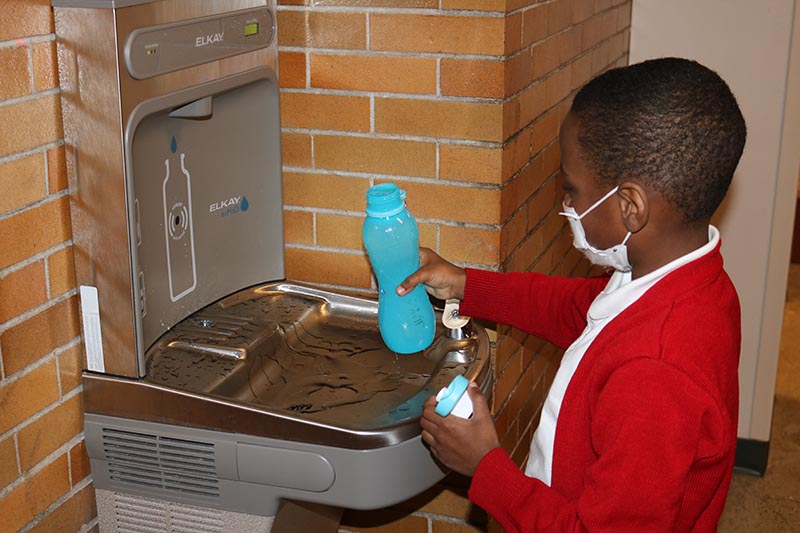
By Shane Carlson, Content Development Specialist, Ascension Catholic School
Filling reusable water bottles from a new hydration station has been an economical and environmental improvement for scholars and staff at Ascension Catholic School in North Minneapolis.
“Having the hydration station has saved us money, multiple trips to the grocery store each week to buy bottled water, and it has created relatively seamless access to clean drinking water for all of our scholars and staff,” Principal Benito Matias said.
The new hydration station, funded by a grant from the Minnesota Department of Health, features a water bottle filling station and a water fountain accessible to all scholars and staff. “It’s hard to believe how something so seemingly as common as a water fountain could make such a big difference in the ‘school lives’ of our scholars and teachers,” Matias added.
Though the water fountain feature is currently turned off, following best pandemic practices, scholars and staff are able to easily and efficiently fill their water bottles while having a positive impact on the environment by saving plastic. Physical education teacher Jean Cerisier noted, “I really like that we have the hydration station. It allows teachers and scholars to have the water they need without having to bring lots of water from home. It also allows scholars to have water bottles in the classroom and keeps them in the class longer.”
Go to top
WUTT Celebrates First Class
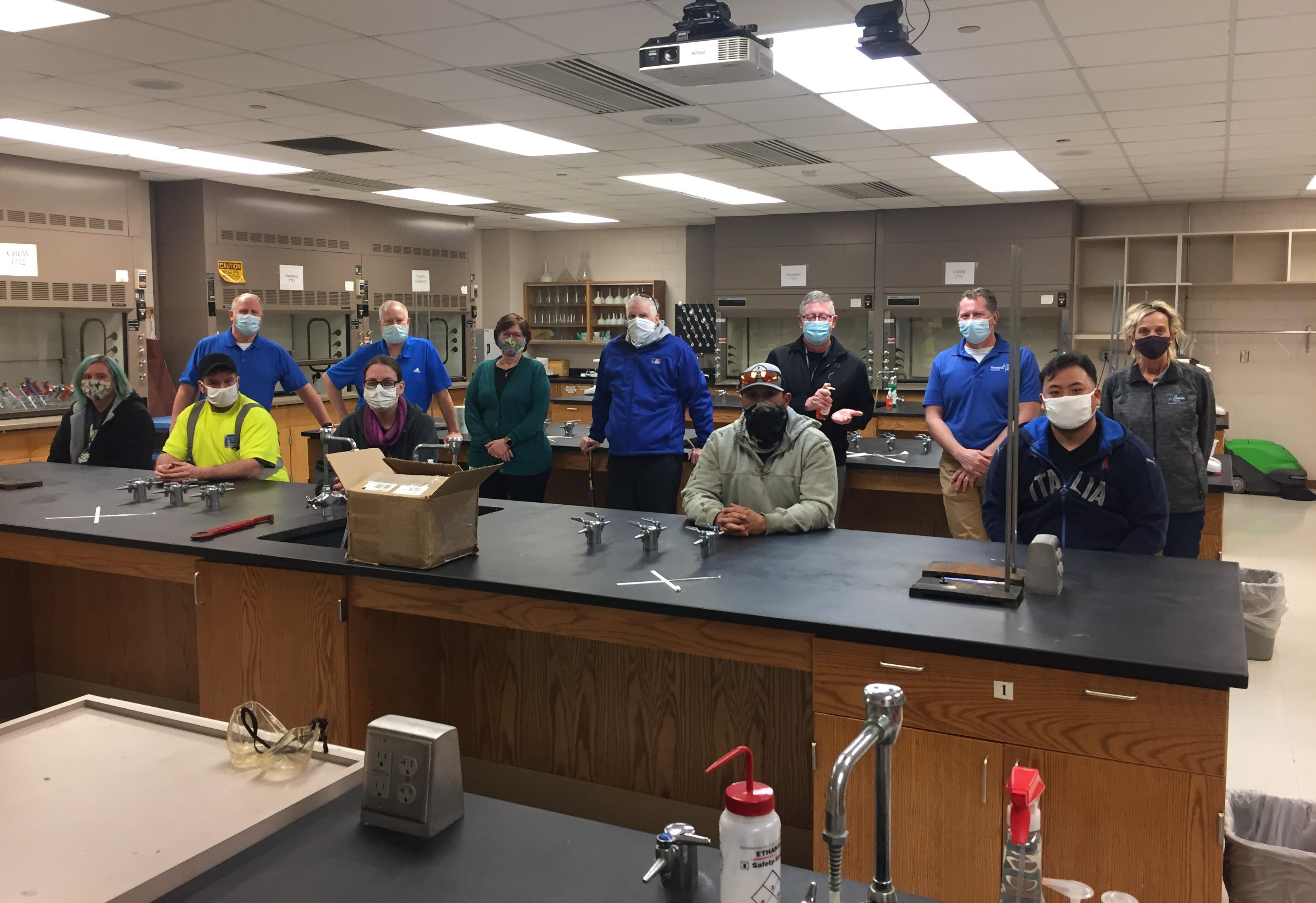
The Water Utilities Treatment & Technology (WUTT) program at St. Paul College had its first class completion on April 8. Paul Coone, the water superintendent for the city of Roseville, taught the initial module, which covered water distribution systems. WUTT is a series of non-credit water and wastewater modules taught at St. Paul College. Students who complete the modules will be able to get water operator certificates and jobs with water utilities.
Another module, Water Treatment Plant Operations I, began in mid-July, and Plant Operations II will start in early November. The modules also cover wastewater topics.
Go to top
PWS Profiles: Michael Bourland, Erin Culver, Andrew Karp, Samantha Miltz
The Public Water Supply units at the Minnesota Department of Health have welcomed several new employees:
 Erin Culver is the state grant and connection fee administrator. She worked on the finance team for four years at the Minnesota Bureau of Criminal Apprehension and before that was an executive assistant at a construction company. She was also a substitute teacher for five years and prior to that, a stay-at-home mom for 11 years for Brody (now 19), Riley (16), Casey (14), and Kerrigan (11). In addition, Erin has four dogs (Millie, Basher, Leo, and Skyler), two cats (Zane and Oliver), and one husband (Mike).
Erin Culver is the state grant and connection fee administrator. She worked on the finance team for four years at the Minnesota Bureau of Criminal Apprehension and before that was an executive assistant at a construction company. She was also a substitute teacher for five years and prior to that, a stay-at-home mom for 11 years for Brody (now 19), Riley (16), Casey (14), and Kerrigan (11). In addition, Erin has four dogs (Millie, Basher, Leo, and Skyler), two cats (Zane and Oliver), and one husband (Mike).
Erin grew up in central Illinois, attended Illinois State University, and moved to Nashville to sing. Two weeks later, she met Mike, who derailed her music career since they got married and moved to Hudson, Wisconsin, to be close to his family. They now live in River Falls.
Erin completed her Master’s degree in criminal justice-forensic pathology in August 2020.
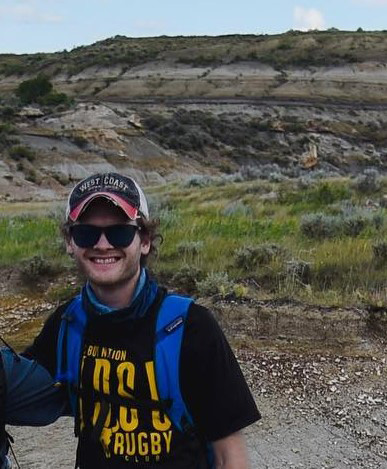 Andrew Karp is a compliance engineer, working with water systems that have issues with arsenic and radionuclides. A native of Brooklyn Park, Andrew went to North Dakota State University and worked for the environmental consulting group at Braun Intertec before coming to MDH.
Andrew Karp is a compliance engineer, working with water systems that have issues with arsenic and radionuclides. A native of Brooklyn Park, Andrew went to North Dakota State University and worked for the environmental consulting group at Braun Intertec before coming to MDH.
An outdoors aficionado, Andrew has camped in the middle of the winter in the Boundary Waters Canoe Area and has a goal of visiting every national park in the country (11 down, 52 to go).
Andrew lives in Brooklyn Park with his girlfriend. They have a cat and a rabbit.
Michael Bourland (shown with his wife below) is the compliance engineer for the Community Public Water Supply Unit. Michael earned his Bachelor’s in Mechanical Engineering degree from the University of Minnesota, Twin Cities. Following college, he worked in the construction industry designing plumbing and HVAC systems and earned his Engineer in Training Certification. At MDH, Michael specializes in the compliance regulations for the Lead and Copper Rule.

 Samantha Miltz has joined the Drinking Water Protection Section as a compliance officer in the Community Public Water Supply Unit. She will be working with the Revised Total Coliform Rule as well as the rules for nitrate-nitrite and surface water treatment. She has worked for the state since 2012, with the departments of Revenue and Natural Resources. Her most recent position was with the Board of Animal Health, regulating their Chronic Waste Disease Program with deer and elk.
Samantha Miltz has joined the Drinking Water Protection Section as a compliance officer in the Community Public Water Supply Unit. She will be working with the Revised Total Coliform Rule as well as the rules for nitrate-nitrite and surface water treatment. She has worked for the state since 2012, with the departments of Revenue and Natural Resources. Her most recent position was with the Board of Animal Health, regulating their Chronic Waste Disease Program with deer and elk.
Originally from North Branch, Samantha spent half her life on the Iron Range and now lives in White Bear Lake. She enjoys time with her family, including her 10-year-old-daughter. An outdoorsy person, Samantha seeks nature to recharge and also dabbles in photography in that area (with a sample of that pictured above). Her hobbies include hunting, fishing, four-wheeling, listening to music ranging from country to classic rock, and road trips. “I’m not sure if driving randomly with the goal of getting lost and experiencing new things just to find your way back counts as a hobby but I’ve completed that task on several occasions,” she says. “My last trip was driving to Mount Rushmore with my daughter for a four day weekend, and we had a wonderful experience.
“I am excited to start my new adventure with the Minnesota Department of Health. I am looking forward to meeting everyone and I’m happy to be here. I’ve had such a warm welcome already. Thank you for being such an inviting team!”
Go to top
Don't Do This
Brooksville is the county seat of Hernando County in Florida and a tad inland from Tampa Bay and the Gulf of Mexico. The community of 8,000 is known for its scenery and historic buildings. On the down side, it is named after Preston Brooks, known for beating of abolitionist senator Charles Sumner with his cane during a slavery debate in 1856. Brooksville was established that year with the merger of two smaller towns and took its name as a show of support for Brooks.
More than a century-and-a-half later, Brooksville made the news in another bad way, by selling its water tower—accidentally. Last year, Brooksville sold a small building next to the city’s water tower to a man who wanted to convert it to a gym. When the buyer went to the county appraiser’s office to register an address for his building, he found out he had purchased the entire site, including the water tower.
Fortunately, the purchaser worked with the city to get the tower back in municipal hands, and Brooksville did not have any service interruptions during the interregnum.
“We’re all good now,” said mayor Pat Brayton. “We just need to be darn sure that doesn’t happen again.”
Nor This
The central Wisconsin village of Plover became an internet sensation after its water tower was repainted and ended up with “Village of Plvoer” on it. Some suggested it would be easier to change the name of the town rather than repaint the tower, although the tower typo was quickly corrected.
Go to top
Is the Water Colder?
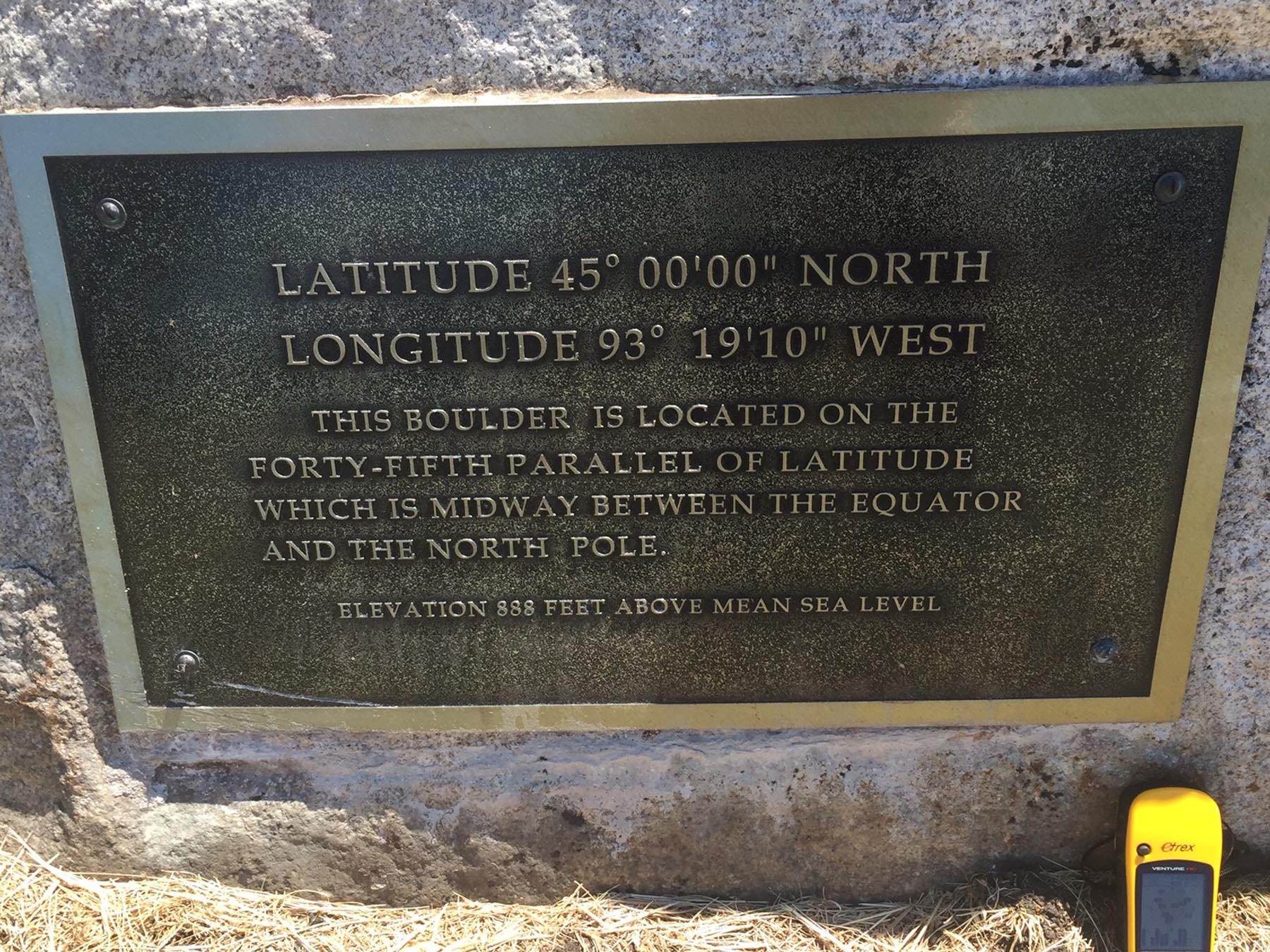
The 45th parallel—the halfway point between the North Pole and the equator—runs though Minneapolis, which is flanked by commemorative markers on Wirth Parkway in Golden Valley (above) and Cleveland Avenue in Roseville (below).
George Kraynick, the water quality manager for the Minneapolis Public Works Water Treatment and Distribution Services Division, receives a lot of question, including strange ones, such as “Do the people closer to the North Pole get colder water than the people closer to the equator?”
With a laugh, Kraynick replied, “No, we work to deliver the same high-quality water to our customers on the North Pole side and the equator side. The characteristics of our water are the same everywhere in Minneapolis, including the temperature.”
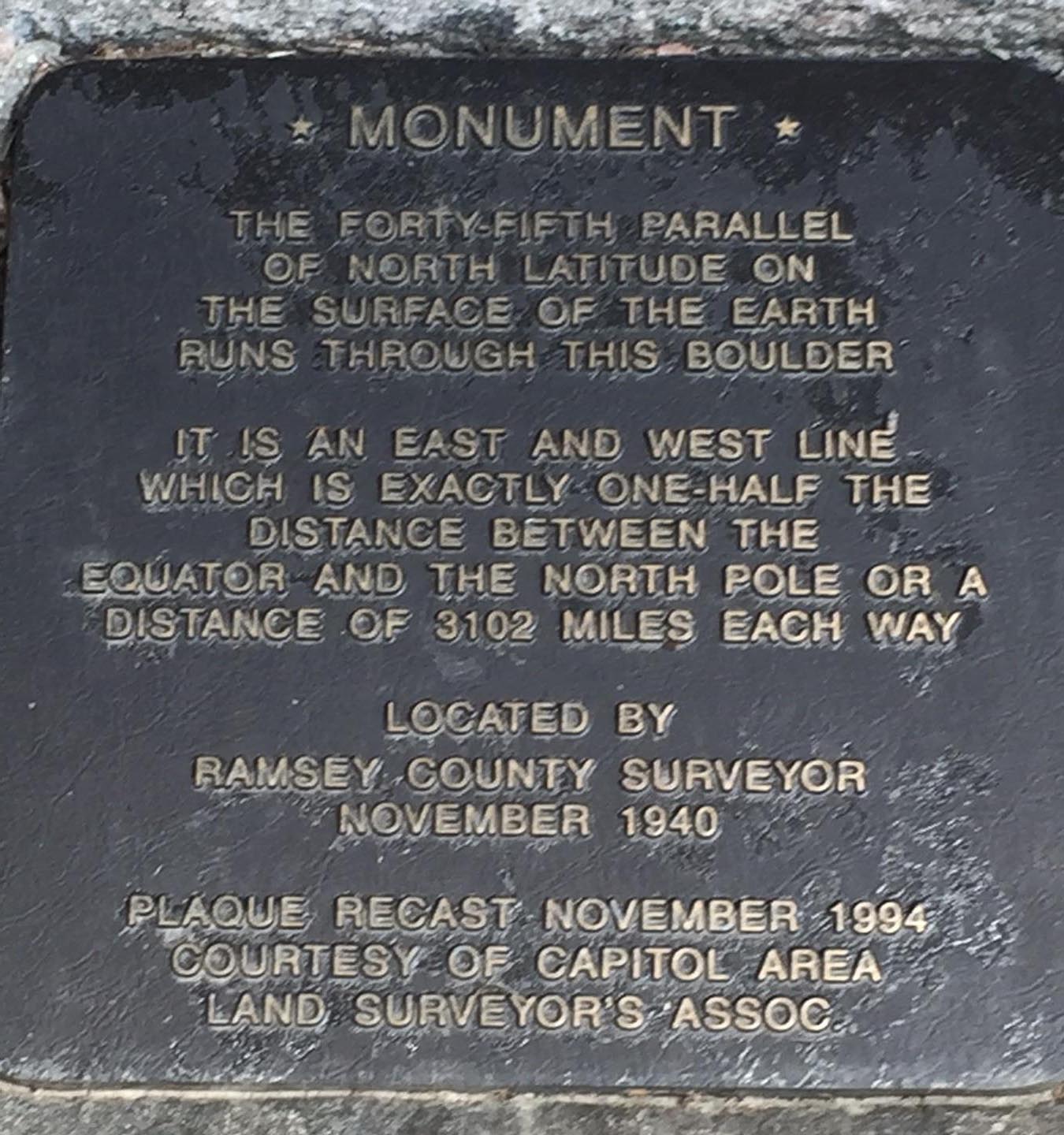
Go to top
In-Person Schools Returning
After more than a year of on-line training because of the COVID-19 pandemic the Minnesota Section of American Water Works Association (AWWA), and other organizations are back to in-person events, some of which will be a hybrid with on-line options.
Minnesota AWWA will have its annual conference in Duluth again in mid-September and the Northwest District Water Operators School in Moorhead in October.
Go to top
Wastewater Beer?
" . . . Some IPAs taste like poop, and that got me to thinking . . . "
By Joe Janson, MRWA Wastewater Technician
I’m a beer guy, like many of you are, and with being on the road often nothing is more fun to me than catching a ball game and enjoying an ice cold beer. Especially in the summer when baseball is in the air and is being played in nearly every town. Along with baseball, many communities have micro-breweries. In fact, Minnesota has more than 200 small-town breweries. My beer of choice is an IPA, and I’m fascinated by the flavors small town Brewmasters can create in their own local brewed IPA. Now, I know what you’re thinking. Some IPA’s are terrible and taste like bug spray on your tongue. Some might even say some IPAs taste like poop, and that got me to thinking, is it possible to make beer with wastewater effluent?
I know Minnesota has come an extremely long way in wastewater treatment, and most of the wastewater leaving our systems could really be drank. Also, recycling water is getting popular and important in water conservation. So I did a simple internet search to see if wastewater has ever been used to brew an IPA and, wow, I was surprised.
The beer is called Mavericks Tunnel Vision IPA by Half Moon Bay Brewing Company, and the beer is brewed with recycled wastewater taken from sinks, showers, and washing machines. Gray water, essentially. The beer was originally brewed amid a drought in California, trying to reduce the environmental footprint. Even though the beer isn’t claimed to be brewed with toilet water, I think I would need to get over the psychological aspect knowing what’s in this beer in order to drink it.
I kept researching and found the Brewmaster discovered the idea from MASA and their recycling technology that astronaut Scott Kelly used to treat urine and sweat during a full year aboard the International Space Station. Now, reading reviews from people who’ve had the Tunnel Vision IPA, I noticed that even though it’s apparently just as tasty as Half Moon Brewing Company’s original IPA, the beer is actually much darker. I’d assume because the water isn’t completely clear as drinking water.
Half Moon Brewing Company is using this beer as a tool to educate the public on recycling water. I know what you’re thinking, but I cannot find this beer in Minnesota nor have I seen it online to purchase so I could enjoy a glass. However, it just creates questions and makes me wonder if this it going to be a trend or a mirage? Will recycled wastewater be used to brew a beer near you? Will people actually drink it knowing what was used to brew the beer?
Regardless, it’s an extremely intriguing and interesting idea that connects some of my favorite things: beer and wastewater. So, if you’re going to attempt to brew beer from your own treated wastewater effluent/recycled wastewater, or find a local brewery willing to try and create their own Tunnel Vision, please let me know because I want to try it. Cheers!
Reprinted from the Summer 2021 Today, a publication of the Minnesota Rural Water Association (MRWA)
Go to top
Duluth Communicates to Customers on Lead in Water
Duluth has been in the news lately for finding high levels of lead in water in investigative sampling. While noting that it is in full compliance with regulations, the city has been communicating with its customers about ways to lower lead levels.
Much of the problem revolves around lead service lines, which Duluth is addressing, and the city produced a “Healthy Water Habits” fact sheet to help citizens reduce the lead in their water with simple methods. Duluth outlined the steps with a strategy of “Clean, Flush, Consume Cold,” outlined as follows:
Clean your faucet aerator screens regularly. Small particles of solder and other material can accumulate in faucet aerators and in some circumstances can release lead into the water. Aerators should be cleaned at least twice a year and more frequently after work is done to your plumbing system.
Flush your cold water lines before water is used for drinking or cooking. The goal is to have cold, fresh water from the main in the street come out of your tap before drinking the water. To flush the plumbing, run water until you feel a temperature change, then run water for an additional 30 seconds to 3 minutes. The time depends on the length and diameter of your service line. The farther your home is from the street, the longer you need to flush. When in doubt, flush it out.
CONSUME COLD—Always use cold water for cooking, drinking, and preparing baby formula. Hot water corrodes pipes faster and is more likely to contain lead. If you need hot water for food or drinks, get water from the cold water tap then heat the water.
The city developed a Lead Water Education web page:
Go to top
Department of Natural Resources Issues Drought Guidance
The Minnesota Department of Natural Resources (DNR) announced that the state is now in a drought warning phase and has issued guidance to public water systems, including water-use reduction actions with a goal of reducing water use to 50 percent above January levels. Systems serving populations of greater than 1,000 are advised to implement restrictions contained in their Water Supply Plan.
“Significant demand reduction is achievable by restricting or banning non-essential outdoor water use, especially lawn irrigation, power washing buildings, car washing, and swimming pool filling,” notes the DNR. “Encourage customers to fix leaks, install water-saving devices and water-efficient appliances. Have conversations with your biggest water users and ask them how they might reduce water use, especially during peak times.”
Communication to customers could include large exterior signs around the community, mailing/emailing all customers, radio station announcements, Facebook posts or other social media messages, and a news release to local media. “Explain the critical situation and that you need everyone’s help. Ask customers to conserve water as much as possible.”
The state drought plan is available on-line:
Minnesota Statewide Drought Plan (PDF)
Go to top
Deb Swackhamer Dies
Deb Swackhamer, longtime director of the University of Minnesota Water Resources Center, died of cancer last April at the age of 66. Swackhamer was an internationally recognized environment chemist and the chair of the U. S. Environmental Protection Agency’s Science Advisory Board from 2003 to 2012. She also chaired the EPA’s Board of Scientific Counselors from 2015 until her dismissal by the Trump Administration in 2017. At the University of Minnesota, she served on the faculty of the School of Public Health, Humphrey School of Public Affairs, and the Water Resource Science Program. She was also involved in establishing the Institute on the Environment at the U of M.
Go to top
Words to Live By
“It ain’t what you don’t know that gets you into trouble. It’s what you know for sure that just ain’t so.”
—Mark Twain
Go to top
Past Waterlines Archived at wateroperator.org
The Minnesota Department of Health is archiving past issues of the Waterline for only the previous three years. However, wateroperator.org is hosting past issues back to 1997.
To access these, go to Search for Documents. Select the following filter criteria: HOST – Minnesota Department of Health; TYPE – Newsletters/Magazines; STATE – Minnesota. Click the “Retrieve Documents” button.
Go to top
Reminder to All Water Operators
When submitting water samples for analyses, remember to do the following:
- Take coliform samples on the distribution system, not at the wells or entry points.
- Write the Date Collected, Time Collected, and Collector’s Name on the lab form.
- Attach the label to each bottle (do not attach labels to the lab form).
- Include laboratory request forms with submitted samples.
- Do not use a rollerball or gel pen (the ink may run).
- Consult your monitoring plan(s) prior to collecting required compliance samples.
Notify your Minnesota Department of Health district engineer of any changes to your systems.
If you have questions, call the Minnesota Department of Health contact on the back of all sample instruction forms.
Calendar
Operator training sponsored by the Minnesota Department of Health and the Minnesota AWWA will be held in several locations this spring.
Register for schools and pay on-line:
Go to top